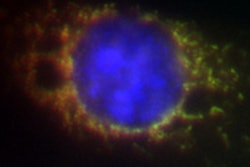
NEW YORK (Reuters Health) - In comparison with other patients, those with oral cancer report significant levels of spontaneous pain and functional restriction from pain, researchers report in a March 9 online paper in Pain.
"Our research demonstrates that patients with oral cancer experience pain in their mouth but few with precancer suffer such pain. Patients and clinicians should be aware that oral pain could be a sign of malignant transformation from oral precancer," Dr. Brian L. Schmidt told Reuters Health by email.
According to Dr. Schmidt of New York University College of Dentistry and Dr. David K. Lam of the University of California, San Francisco (UCSF), detecting head and neck cancer in the first stages can improve survival by as much as 90%.
"Although pain is often recognized as an important symptom," they note, "a clinical aphorism has been that early head and neck cancers often go unnoticed because they are asymptomatic."
To investigate the validity of this notion, the researchers studied 44 patients with oral cancer and 20 with oral precancer. Also involved were 21 dental patients with normal oral mucosa.
They completed the UCSF Oral Cancer Pain Questionnaire at their initial visit. This uses a visual analogue scale (0 to 100 mm) to quantify eight pain-related responses.
The oral cancer patients reported significantly greater spontaneous and function-related pain in comparison with the other groups. Most (84%) presented with moderate to severe pain (greater than 30 mm) at the time of initial diagnosis.
In contrast, there were no significant differences in response between the precancer and normal patients.
The oral cancer patients also experienced a significantly higher function-related rather than spontaneous pain intensity, particularly in regard to sharpness and aching.
There was no correlation between tumor size and reported pain levels or functional restriction.
These findings, say the investigators, "suggest an important predictor for the progression of oral precancer to cancer may be the onset of orofacial pain that is exacerbated during function."
This "may be the best clue and should be included in the clinical assessment of patients to identify a high-risk group to apply screening strategies for early cancer detection," they conclude.
By David Douglas
Source: https://bit.ly/fCmhB8
Pain 2011.
Last Updated: 2011-03-25 18:11:23 -0400 (Reuters Health)
Copyright © 2011 Reuters Limited. All rights reserved. Republication or redistribution of Reuters content, including by framing or similar means, is expressly prohibited without the prior written consent of Reuters. Reuters shall not be liable for any errors or delays in the content, or for any actions taken in reliance thereon. Reuters and the Reuters sphere logo are registered trademarks and trademarks of the Reuters group of companies around the world.



















